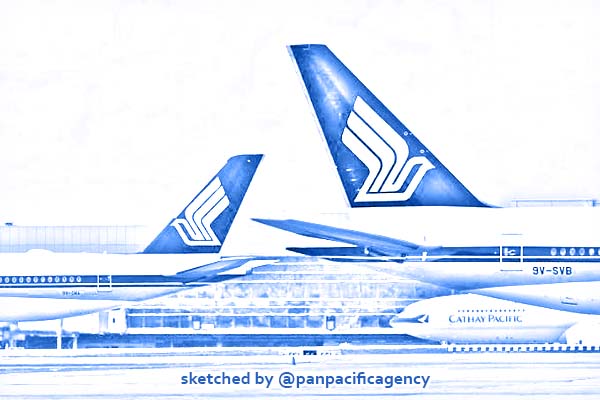Singapore Airlines seeks liquidity after record loss

Singapore Airlines is exploring ways to increase liquidity and reduce capital expenditure and operating costs amid the ongoing Covid-19 outbreak. PHOTO: REUTERS. Sketched by the Pan Pacific Agency.
SINGAPORE, Nov 9, 2020, Bloomberg. Singapore Airlines Ltd plans to raise more liquidity after posting its biggest quarterly loss on record as the coronavirus decimated travel demand and charges from fuel hedging and fleet impairment weighed on its bottom line, Bangkok Post reported.
The airline is in advanced talks to raise funds in the debt capital market and by selling and leasing back some of its aircraft, Chief Executive Officer Goh Choon Phong said during a briefing Monday, without elaborating. Cash burn has fallen to about S$300 million ($223 million) a month from about S$350 million in the three months to July, Chief Financial Officer Stephen Barnes said.
The carrier has already raised S$11.3 billion in funds through a rights offering and loans in a bid to survive the downturn, and in September said it would reduce its workforce by about 20%. Singapore Airlines reported a net loss of S$2.3 billion in the three months to September as international travel all but dried up. The company expects to operate at about 50% of passenger capacity by the end of next year, up from 16% forecast for the end of 2020.
Tapping the debt market and selling and leasing back planes should ensure the airline has “very strong” liquidity, Goh said. “We have one of the strongest, if not the strongest liquidity position among airlines,” he said. The carrier’s net cash and cash equivalent stood at S$7.06 billion at the end of September.
Singapore Airlines may need to decide toward the end of the first quarter whether to tap the S$6.2 billion in convertible bonds from a fundraising plan announced in March, Barnes said.
The airline’s shares fell 1.4% Monday. They’re down 46% this year, compared with a 19% drop for the benchmark Straits Times Index.
For the half-year ended Sept 30, Singapore Airlines reflected S$1.3 billion in impairment charges on the removal of 26 older aircraft after reviewing its network to determine the size and mix of its fleet over the longer term. They were eight Boeing Co 777s, seven Airbus SE A380s, nine A320s and two A319s.
Fuel hedging contributed to a S$563 million loss. In 2017, Singapore Airlines extended some of its fuel-hedging contracts to as far out as five years, from the usual 24 months. The airline said Friday it has paused fuel hedging activity since March given the uncertain pace of recovery.
Singapore Airlines has restarted some routes, including its non-stop service to New York, and plans to gradually reinstate flights to places such as Brunei, Kathmandu and Male. Vice President of Commercial Lee Lik Hsin said last month the airline is cautiously optimistic as governments reopen their borders for business travellers and create travel corridors.
Singapore, a small island nation dependent upon international tourism and trade, is working to reopen its borders. It is planning a travel bubble with Hong Kong that will use tests to replace quarantine and it has opened to visitors from some countries deemed as low risk, including New Zealand and China.
Singapore Airlines said last week it has set up a business offering training programmes to other companies in a bid to generate additional revenue.